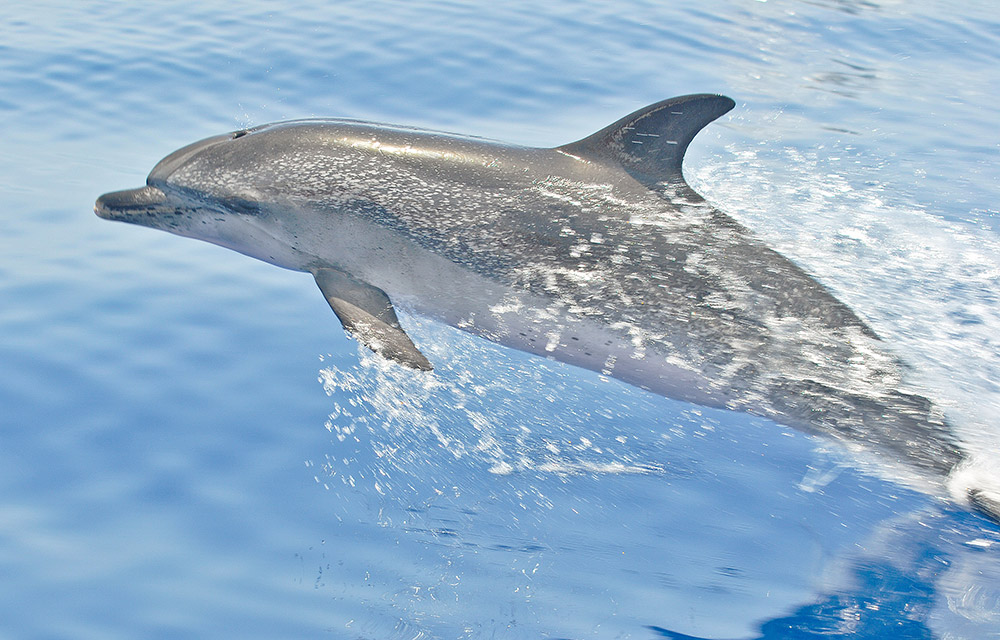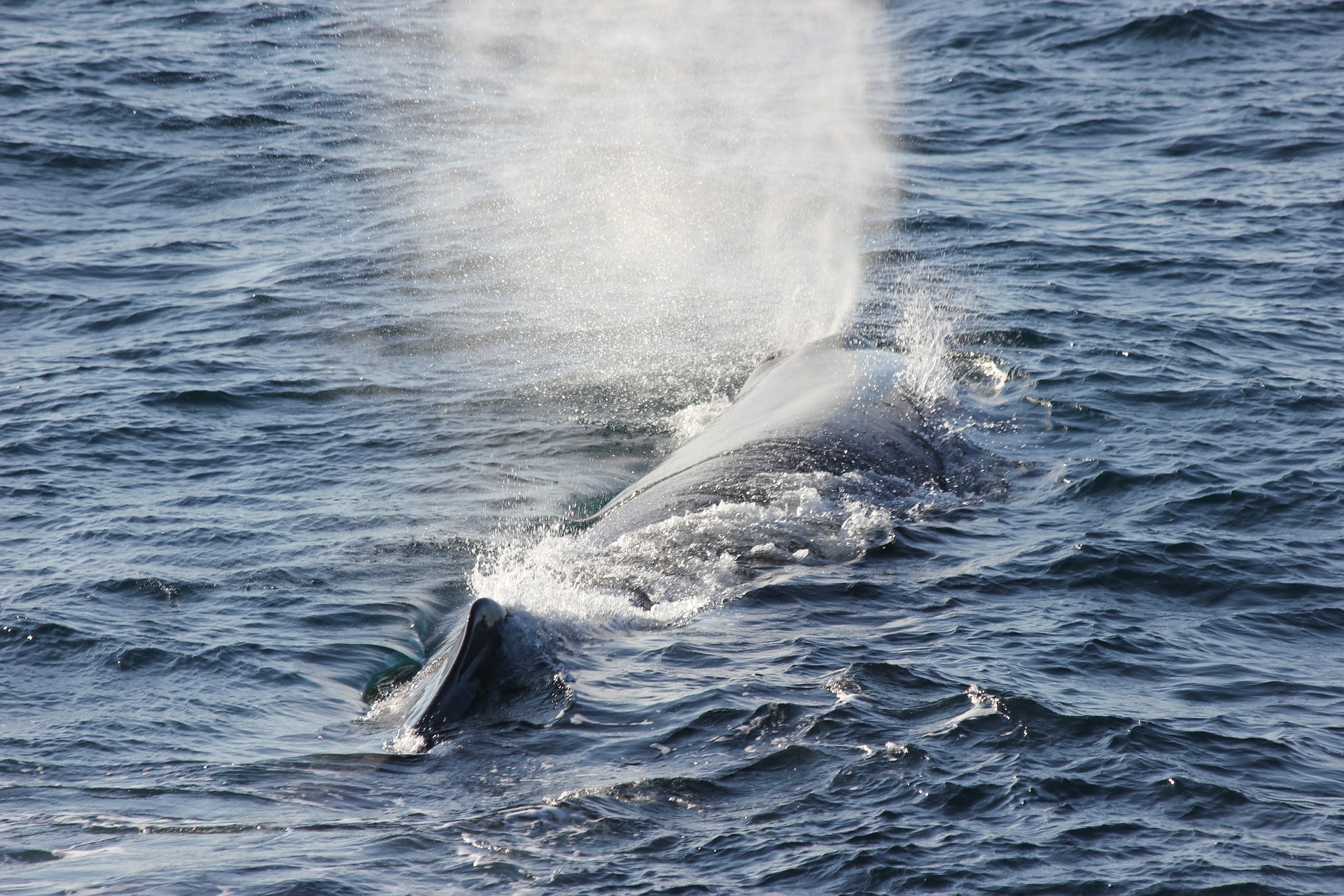Atlantic spotted dolphin (Stenella frontalis)
This species is characterised by the mottling that covers most of its skin as an adult. They are numerous in groups and have a very active behaviour. They can be seen more frequently from autumn to late spring. Weight: 60-80 kg. Size: up to 2.3 metres.

Rough-toothed dolphin (Steno bredanensis)
The grooves on its teeth and its elongated skull are the most representative characteristics of this species. It is a darker dolphin than the bottlenose dolphin and has lighter spots. They are distributed in groups of 6 to 10 individuals. Weight: up to 150 kg. Size: up to 2,7 metres.
Bryde’s whale (Balaenoptera brydei)
It is similar in appearance to the minke whale, although the Bryde’s whale is smaller and more robust and has a unique feature in the family, which is the three dorsal ridges instead of a central one. The length of males is 13.7 m and of females 14.5 m, with a maximum length of 15 m. The back is dark bluish-grey to metallic grey, with lighter flanks and a light throat and belly.
Striped dolphin (Stenella coeruleoalba)
Thanks to its bluish colouration and the stripes (stripes) running from the eyes to almost the tail, this dolphin is very easy to identify. It is sometimes elusive to boats, although it is a very fast swimmer and likes to jump out of the water. Weight: 100-130 kg. Size: 2,7 metros.
Risso’s dolphin (Grampus griseus)>
It is morphologically very similar to the short-finned pilot whale, but differs in the grey colour of its skin (almost white in some adult specimens) and the contrast with the dorsal fin, which is still dark. Weight: 300-600 kg.
Cachalote (Physeter macrocephalus)
This species is the largest of the odontocetes, equal in size to whales. It has a gigantic head, dark striated skin and a small dorsal fin. They dive for food for more than an hour at depths of more than 2,000 metres. They are most often seen in spring. Weight: 15-60 tons. Size: 11-18 metres.
Seasonal/migratory: Sometime during the year


